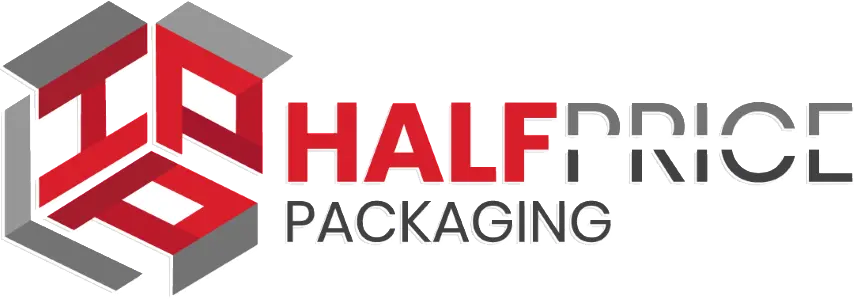Blogs
Why 90s Graphic Design Is Making a Comeback
30 - April - 2025
The first original development phase of Graphic design led to major progress in the field. Graphic content distribution methods developed into distinct approaches because of industrial progress while pre-digital design practices reached maturity. Modern society uses the 1990s graphic design elements and reinterprets them for present-day applications. Branding companies use digital media combined with new branding strategies to revive 1990s visual accents characterized by bright colors and irregular typography. Current clients choose 90s graphical design standards so the design industry maintains its focus on this era. Let’s dive in!
Why 90s Graphic Design is Back
Social media platforms display two fundamental 1990s design aspects through pixelated graphics and vibrant text appearance and strong neons hues. Design vehicles operate as historical devices to detect the retro design trends that appeared in the year 1990. People today embrace the aesthetically modern interpretation of nostalgic designs which originally appeared in the 1990s. Nostalgic design features give companies emotional paths to connect with target customers aged 18 to 24 years who desire forward-thinking fashion aesthetics.
How Graphic Design Has Changed Over Time
The evolution of graphic design remained substantial up to its present state after advancing from pre-digital manufacturing practices until reaching total design transformation because of the digital revolution. During the 1950s designers focused on developing basic platforms as a foundation for clean communication systems. Adobe Photoshop and Illustrator launched during the 1990s graphic design period thereby reaching peak graphic design excellence. During the 2000s designers employed digital tools for transforming digital artwork into graphic design through the implementation of digital artwork and innovative techniques for digital medium automation.
What Made 90s Graphic Design Special?
During the 1990s designers operated from their experimental design areas. All products created in the 1990s used super-bright neon hues while joining bold graphical text in celebratory designs. The asymmetric design ruled throughout 90s graphic design by combining multiple design elements in a way that followed the principles of collage creation. Digital assets integrated into sketches enabled the designer to create dynamic visual effects that appeared in the finished product. The largest marketing typefaces from the 90s featured both bubble letters combined with outlandish fonts which spread across entire advertising fields. During the previous century grunge style became widely popular because it pursued a rebel attitude through its rough design elements which matched the rebellious spirit of the time.
Why Nostalgia is Bringing Back 90s Design
The public's favorable feelings toward the 90s era have led to the revival of its design elements. Individuals from the 1990s experienced life changes that led them to pioneer the roles of designers and marketers for contemporary professional creative workers in modern industry. During this era designers along with marketers decided to re-create the design elements which they were exposed to during their teenage demographics. The audience feels at ease because the zine-inspired design elements as well as 1990s retro color palettes and bubble fonts from the graphic design movement of that era. People today find attraction in the rebellion of this design approach because they desire to confront current minimalist business aesthetics.
Early Digital Tools and Photoshop in 90s Design
During the time preceding the 1990s the design domain depended on physical tools such as paintbrushes and typewriters as well as printing machinery. The total transformation of the design industry happened upon Photoshop and Illustrator's release in the 1990s. Digital tools developed during the revolution of technology became essential instruments for professional graphic practice. These tools enabled designers to obtain new capabilities through which they tested design approaches from pixel graphics to VHS filters. The new design tools let professionals merge damaged efects with grain patterns for creating intricate designs beyond the limits of traditional accessibility rules.
How Brands Are Using 90s Design Today
Business organizations establish modern brands through contemporary branding methods because of 1990s graphical design elements. Retro design elements allow modern companies to establish better customer connections by creating nostalgic emotions. Modern branding strategies for multiple companies spanning different industries showcase 90s style design elements that appear in all marketing contents including promotional materials and logos with customized boxes for packaging. The Coca-Cola marketing department uses bold typography along with neon color schemes to create a modern look through their advertising campaigns even though tech companies use pixelated graphics to reference early internet platforms. Contemporary companies generate appealing branding assets through 1990s visual design which attracts current consumers who have a connection with original fans.
Popular 90s Design Trends Making a Comeback
Different design aspects from the 1990s era present themselves powerfully in current aesthetic design practices. A selection of top 90s design elements return to modern aesthetics through these following trends:
Grunge graphic design: Grunge graphic design has returned to fashion and music and graphic design fields because it features distressed textures and natural unedited visual style from its original popularity.
Neon color palettes: Bright neon colors which controlled 90s graphical design elements became predominantly visible in computer-based art and digital signage of that era. Vibrant 90s colors drive many businesses to make stunning visual promotions.
Pixel art: Modern designers of gaming applications alongside portable apps employ pixel art because it originates from early video games and computer displays.
VHS filter design: The fuzzy distorted characteristics of VHS filter retain popularity among present-day design professionals because it replicates a vintage style that people associate with their experiences using VHS video technology in the past.
How Graphic Designers Are Using 90s Style Today
The present-day graphic design world accepts 90s style through combined movements of modern graphic design. Today's designers forge a balance in their creations by linking minimalism with flat aspectual elements from the 1990s. The 90s typographic elements together with modern layout formats appear throughout their professional work. The creators achieve an easy-to-understand design through their use of pixel art and modern displays for implementing neon elements. Designers develop 90s-inspired modern designs by uniting contemporary and vintage elements which results in multiple visual effects appropriate for present-day design implementations.
Cultural Influences on 90s Graphic Design
The graphic design movement developed during the 1990s because of the cultural trends that appeared in that decade. The three core developments in 90s graphic design originated from Internet technology and from the powerful pop culture movement coupled with the music industry supremacy. The 90s graphics evolved through Saved by the Bell television and Friends broadcast as well as Nirvana and Sonic Youth music album covers. Web design during its early stages used block elements creating permanent influences on current visual aesthetics from the 1990s. People during the 1990s experienced a genuine youthful design feeling which displayed rebellious characteristics to onlookers.
Will 90s Graphic Design Stay Popular?
The present design field draws inspiration from 90s graphic design although its general reception remains unpredictable based on current data points. Future design trends involving nostalgia will likely keep the 90s design blueprint intact in their aesthetic. The popularity of 90s graphic design persists in modern visual culture since both brands revere its nostalgic aspects and creative designers incorporate retrospective elements in their work. Future changes in the trend cannot be determined yet.
Conclusion: The Lasting Power of 90s Graphic Design
People in successive population generations develop fascination for the design features which appeared during the ten-year period between 1990 and 1999. Modern rebelliousness meets playful design aesthetics in 90s design along with novel text treatments which enhance powerful choices in color theory. Modern trends require designs as an essential element but 90s design failed to emerge as a groundbreaking discovery. Professional digital artistic designs gain 90s enchantment through pixel art blending with grunge textures along with neon color schemes. The graphic design team at Datalanix delivers service solutions to clients through the combination of current and past design elements. Retro elements in modern brand images that our services make possible lead to updated contemporary designs offered to customers.









